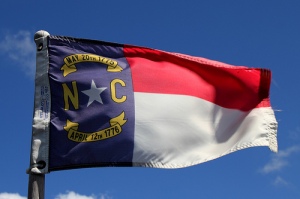 Duke Energy has been cleared to update power lines near the Eastern Band of the Cherokee’s reservation in the western North Carolina mountains.
Duke Energy has been cleared to update power lines near the Eastern Band of the Cherokee’s reservation in the western North Carolina mountains.
Late last month, the North Carolina Utilities Commission handed down their ruling, allowing Duke’s project to continue despite protests from the Cherokee tribe and other residents of the Kituwah Valley. The Valley is home to a sacred site for the Cherokee and fear of damage being done prompted their reaction against the plans floated by Duke. The Valley is located along the Tuckaseegee River east of Bryson City.
The state utilities commission decided that Duke had not acted illegally by beginning construction on a 161-kilovolt transmission line upgrade. The upgrade is intended to help with increased demand in the area, specifically from the Harrah’s Hotel and Casino and surrounding development in Murphy, North Carolina.
The tribe and local citizen groups argued that the construction project would damage property values by destroying the natural beauty of the area. They requested that either the project be stopped entirely or that they be compensated for their predicted loss in property value.
The Commission ruled that the complainants had not met their burden of proof and had failed to show that Duke Energy had acted unreasonably or inappropriately in their planning of the power upgrade. The Commission also said that it was not empowered to order any compensation for loss in property value. “The complainant’s members will need to pursue that remedy in the appropriate court,” the Commission said.
This isn’t the only issue the group has had with Duke’s planned project. The original complaint filed by the Cherokee included an objection to Duke’s plans to locate an electrical tie station in the area. Duke subsequently voluntarily relocated that station. Duke plans to build a tie station, which steps power down from high-voltage transmission to lower levels needed to serve distribution stations for residential and commercial customers, to serve growth in the bustling casino area.
Duke says it has found two alternative sites for a power station so the company can avoid construction near the sacred mound which Michell Hicks, chief for the tribe, says is the home for the tribe’s mother town. One option is 13 acres in the Swain County Industrial park that is almost 4 miles from Kituwah, says Duke Spokesman Jason Walls. That site would cost $400,000. The second site is about 12 acres at Sheppard’s Creek, and would be about 1.4 miles from Kituwah. Because that is private property, Duke is not disclosing the cost.
The necessary improvements should be completed in 2012.
Have you followed this dispute? Have comments or questions about the decision? Drop me a line in the comments section, below.
Source “Duke Energy cleared to build high voltage line near reservation,” by John Downey. Photo (c) Kevin Dobo-Hoffman via CC.



